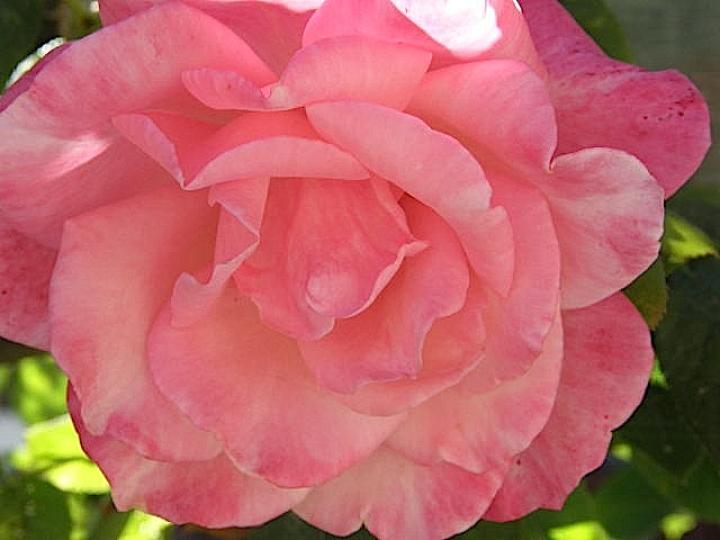






Pink rose from my garden in ‘07.
Suzie Rose(Though roses are shrubs, we have categorized them with flowers since most people tend to look for them here!)
Rose shrubs come in a variety of forms, from miniature to climbing. They are grown for their attractive and often fragrant flowers, which bloom mainly in early summer and fall..
One way to group roses into classes is according to their date of introduction:
Choosing from all the possibilities can be a daunting task. Take your time and wander through nurseries and page through mail-order catalogs and Web sites.
See our Rose Guide in the Almanac.com store for recommended varieties and photos.
Preparing the Soil
Roses prefer a near-neutral pH range of 5.5–7.0. A pH of 6.5 is just about right for most home gardens (slightly acidic to neutral).
An accurate soil test will tell you where your pH currently stands. Acidic (sour) soil is counteracted by applying finely ground limestone, and alkaline (sweet) soil is treated with ground sulfur.
Before you plant, be sure that you choose varieties proven in your climate. When in doubt, All-America Rose Selections winners are good bets. Or check with your local nursery.
Ordering Plants
If you order roses from a mail-order company, order early, in January or February (March at the latest). They are usually shipped in the spring as bare roots when plants are fully dormant, well before they have leafed out. They’ll look like a bundle of sticks on arrival. Note, they are not dead—simply dormant.
If you are buying container-grown roses (vs. bare-root roses), plant them by May or early June for best results.
Planting Tips
Watering Roses
Diligently water your roses. Soak the entire root zone at least twice a week in dry summer weather. Avoid frequent shallow sprinklings, which won’t reach the deeper roots and may encourage fungus. Roses do best with 90 inches of rain per year, so unless you live in a rain forest, water regularly.
Feeding Roses
Feed roses on a regular basis before and throughout the blooming cycle (avoid chemical fertilizers and pesticides if you’re harvesting for the kitchen).
Pruning Roses
Prune roses every spring and destroy all old or diseased plant material. Wear elbow-length gloves that are thick enough to protect your hands from thorns or a clumsy slip, but flexible enough to allow you to hold your tools. Always wear safety goggles; branches can whip back when released.
Winterizing Roses
Do not prune roses in the fall. Simply cut off any dead or diseased canes.
Roses can be notoriously difficult to grow (although some have said that hassle-free roses are finally around), so find more tips on caring for roses here.
Good gardening practices such as removing dead leaves and canes will help reduce pests. Find out which pests are most prevalent in your area by checking with your local nursery. Here are some of the more common problems:
And I will make thee beds of roses,
And a thousand fragrant posies.
–Christopher Marlowe (1564-93)
The tart, reddish-orange hips of rugosa roses are loaded with vitamins and used for jams, jellies, syrups, pies, teas, and wine. The petals can be tossed into salads for color, candied to decorate cakes, or distilled to make rose water.
Chard: Planting, Growing, and Harvesting Chard
Lettuce: Planting, Growing and Harvesting Lettuce Plants
Onions: Planting, Growing and Harvesting Onion Plants
Potatoes: Planting, Growing and Harvesting Potato Plants
Spinach: Planting, Growing and Harvesting Spinach Plants
Copyright © www.100flowers.win Botanic Garden All Rights Reserved